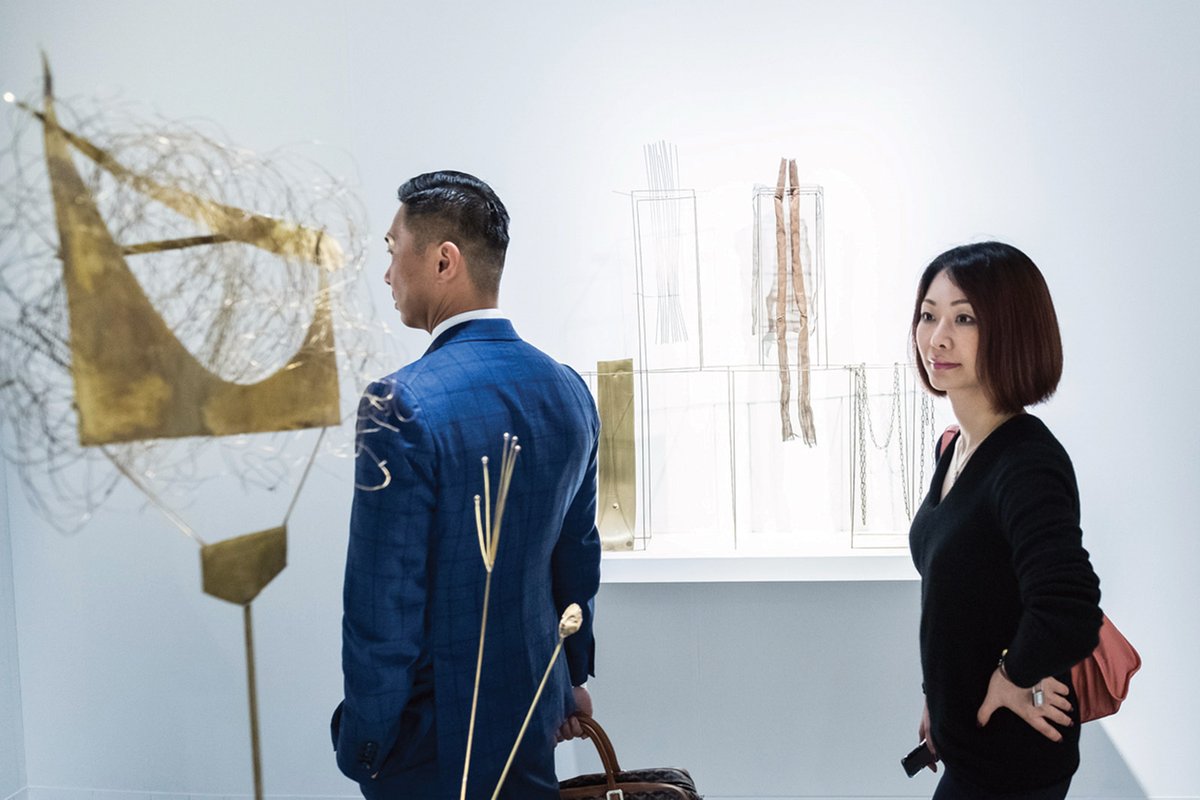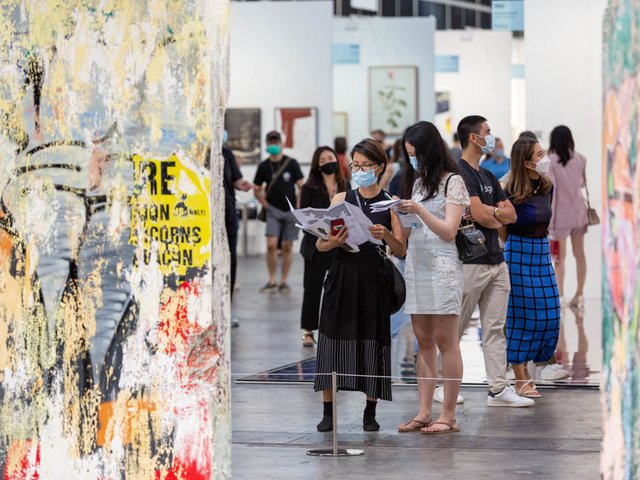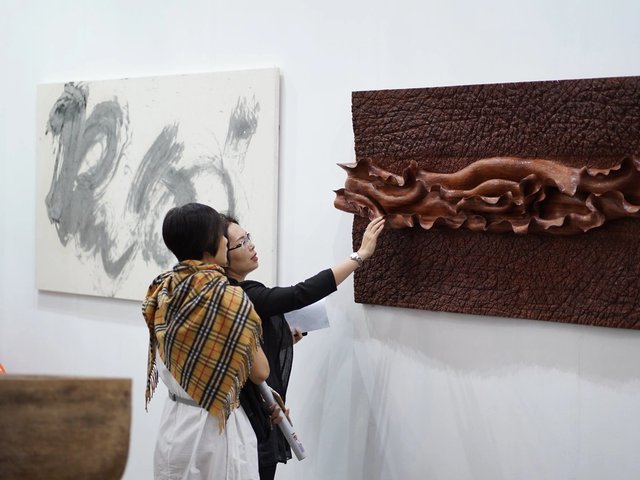Art Basel in Hong Kong (ABHK, 21-23 May) will look very different to its predecessors, but what matters is that the show will go on. “It just goes to show why we call Hong Kong home,” says ABHK’s director Adeline Ooi. “We are a success because of Hong Kong, the city and its people.” Collaboration is key—Fine Art Asia will stage an eight-gallery pavilion within ABHK and Art Central will run concurrently in the same venue, the Hong Kong Convention and Exhibition Centre.
Exhibitors are down from 242 to 104, over half of which (56) are satellite booths, a response to restricted travel. While in April the Hong Kong government floated the possibility of lifting restrictions on arrivals from mainland China, this has not happened and the two-week quarantine remains in place. Ooi says: “The list [of galleries] is broad, not just Asian.” However, 72% of participants do have spaces in Asia, compared to 52% in 2019. It is Asian artists’ time to shine—this edition will bring Thai provocateur Rirkrit Tiravanija’s paintings inspired by Philip Guston, at Gladstone Gallery, while Arario Gallery will delve into 1970s Korean experimental art.

Greg Ito's Paradise (2021) will be on show with Anat Ebgi gallery at Art Basel Hong Kong 2021 and online as part of Art Basel Hong Kong: Live Courtesy of the artist and Anat Ebgi. Photo: Michael Underwood, courtesy of Art Basel
Hong Kong’s art scene unified around navigating the 2019 pro-democracy protests and their suppression, followed by the pandemic. This year institutions are holding a more spread out art week, allowing for social distancing. Para Site is showing Curtain (until 25 July), a wide-ranging project in partnership with Shanghai’s Rockbund Art Museum. The Hong Kong Museum of Art’s New Horizons: Ways of Seeing Hong Kong Art in the 80s and 90s (until 24 April 2022), includes a recreation of Para Site’s 1998 café, along with works by pioneers such as Ellen Pau and May Fung. Tai Kwun Contemporary presents contemporary ink art group show Ink City and Portals, Stories, and Other Journeys, a partnership with Asia Art Archive (both until 1 August).
The fair confronts a fresh crackdown on freedom of expression in Hong Kong, with an Ai Weiwei work removed from M+ museum’s opening show amid intensifying calls from pro-Beijing legislators for art to be politically harmonious. Ooi says this has not yet seeped into the fair: “There is no sense in second guessing. We have done nothing different for this time. One factor is that we are not in the public domain, we are a business, a market platform.”
As for Hong Kong’s viability, she says: “Long term, let’s see. We are still excited about M+ and Palace Museum,” which are opening this year after long waits. “What is important to me is that in the art ecosystem no one has left. If anything, more galleries are coming in, and the auctions and logistics companies are still there.” Ooi dismisses the calls to boycott Hong Kong in protest at the crackdowns. “Hong Kong has been through so much, we have to be supportive and work together... To just bash it is not productive,” she says.
The fair's venue, the Hong Kong Convention and Exhibition Centre, is part-owned by the Hong Kong government. Asked whether Art Basel sees this as problematic, given the government's tough approach to pro-democracy protestors and clamp down on freedom of expression, a fair spokesperson says: "Hong Kong has hosted Art Basel since 2013. Since then, the city’s art sector—most notably its institutions and galleries—has grown enormously and we believe Art Basel has played a significant role in this ongoing development, by bringing together the local arts community every year, and connecting Hong Kong’s art scene with global audiences. In creating a successful commercial platform, furthermore, we have been able to drive new business to Hong Kong’s galleries and the city’s broader art ecosystem. Every business operating in Hong Kong is subject to local laws and in this respect Art Basel is no exception."
• Art Basel in Hong Kong, Hong Kong Convention and Exhibition Centre, 21-23 May





